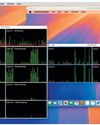
Connectivity divides us, drawing a line between those things which can talk to each other and those things which simply don’t know – or even don’t want to know – what everything else is trying to say. It sums up the most frustrating part of the smart home landscape: you simply can’t link everything together.
But why? A networking protocol is, after all, technically independent of hardware. It’s simply the set of rules and procedures used to exchange data between devices. If both ends of the connection are equipped with the same set of rules, they speak the same language. Simple. In some areas we have settled on particular protocols which make sense: computer networking, for example, tends to lean on the Open Systems Interconnection, which comprises TCP/IP, HTTPS, DNS et al; this standardization is what make the internet possible. On top of this, we’ve generally settled on hardware for certain tasks. There aren’t multiple commercial wireless networking protocols fighting for your Mac’s attention, for example – we’re all be able to get online with some variant of 802.11.
Problem is, smart home rules are a lot more complicated than simply sending the right messages in the right format. If a smart home manufacturer decides to use a closed API, others won’t have access to relevant commands. If a manufacturer decides to use an unusual radio frequency, others won’t be able to lock in to it even if they know what to say. This is no coincidence – it’s often very deliberate.
この記事は MacFormat UK の August 2020 版に掲載されています。
7 日間の Magzter GOLD 無料トライアルを開始して、何千もの厳選されたプレミアム ストーリー、9,000 以上の雑誌や新聞にアクセスしてください。
すでに購読者です ? サインイン
この記事は MacFormat UK の August 2020 版に掲載されています。
7 日間の Magzter GOLD 無料トライアルを開始して、何千もの厳選されたプレミアム ストーリー、9,000 以上の雑誌や新聞にアクセスしてください。
すでに購読者です? サインイン

Mac hardware
We help to solve your hardware hassles, from interrupted upgrades to running diagnostics

Give your iPhone a whole new look in iOS 18
Make your iPhone uniquely you

iPhone 16
Apple Intelligence-ready smartphone for the rest of us

Apple Watch Series 10
10th anniversary Watch is now slimmer with an even bigger display

AirPods 4
Apple's most affordable AirPods remain a brilliant buy

We. HEAR Pro
Room-filling sound from this stylish wireless speaker

HiDock H1
An impressive 11-port AI audio dock for conferencers

Adobe Premiere Elements 2025
Create eye-catching videos for sharing on social media

Photoshop 2024
Your imagination is the limit with this AI-powered pixel creator

Wispr Flow
Bring the power of AI dictation to DMs, documents and Discord chats